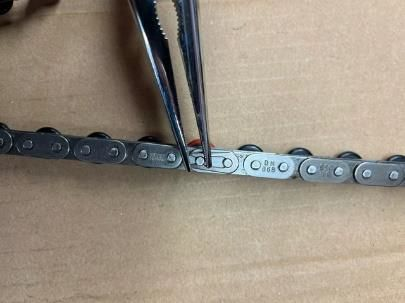Note the different variants:
External spring variant
The block coloured green in the drawing can be shifted on the profile: the chain tensions more strongly further away from the motor
The pressure of the screw on the block, behind which there is a spring, tensions the chain over the idler pulley. Turn the screw in or out to vary the chain tension.
Centre drive variant
The chain length must be selected so that the tensioning wheel (right in the picture) including chain lock can be fitted.
The closer the idler pulley is moved towards the sprocket/shaft, the higher the chain tension. When installing the chain, make sure that the deflection pulley is not positioned on the last hole in the direction of the sprocket/shaft, as the chain can then no longer be tensioned during the next maintenance.
If the chain tension is too high, this will lead to increased wear; if it is too loose, this will generate noise and can cause the chain to jump.
If the clamping distance is no longer sufficient, a chain link must be removed. See the following description
Shorten chain

 The chain lock should be replaced with a new one.
The chain lock should be replaced with a new one.

If the transport chain elongates during use to such an extent that the tensioning path is no longer sufficient, it may be necessary to shorten the chain by 2 links.
1.
Disconnect the chain drive from the drive motor (e.g. by dismantling the drive motor or loosening the drive sprocket)
2.
Move the chain by hand until the chain lock (marked with a red O-ring) is accessible.
3.
Loosen the latch on the back with needle-nose pliers
4.
Remove the link plates and separate the chain.
5.
!! Remove 2 chain links !!! with a chain breaker so that the chain lock can be refitted. The Haprotec chain breaker is used as a tool. If not available, the pin can alternatively be knocked out with a 3 mm pin punch.6.
Refit the new chain lock in reverse order.
7.
Completely reassemble the drive